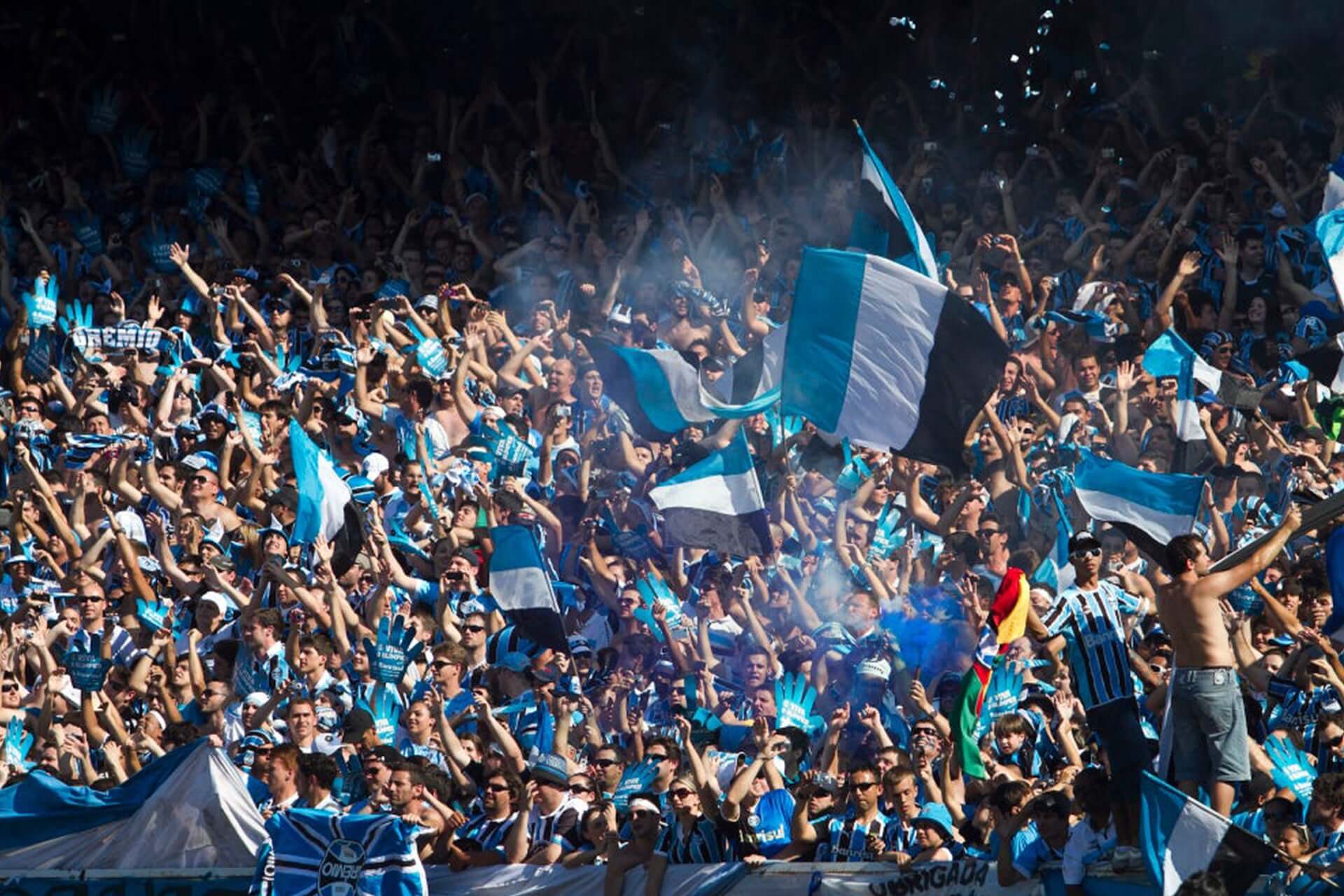With one the largest fan bases in the most football mad nation on earth and a revenue stream that could challenge anyone in South America, Gremio are undoubtedly a big deal.
While their famous blue, black and white kit may be instantly recognisable the side remains shrouded in mystery for many outside of their homeland.
Hailing from the state of Rio Grande do Sul, Gremio’s history is peppered with clashes with fierce local rivals, Internacional, as well as glory on both the domestic and international stage. Dating back to its earliest days the club has acted as a springboard for some of the finest players to ever come out of Brazil and, like many clubs in Brazil, the fans cherish their idols fiercely.
From their foundation in 1903 to becoming one of the giants of South American football, this is Gremio’s story...

Founded in 1903 by a group of 31 Porto Alegre locals led by Cândido Dias, Grêmio Foot-Ball Porto Alegrense are one of Brazil’s oldest professional clubs. From the sides inception their full name was generally shortened to simply, Gremio, a word that translates to society or fraternity.

The club's very first kit in 1903 featured blue and maroon stripes with a white tie and was based upon that of Exeter City. The maroon was switched for black a year later and in 1928 white was added. They have worn the famous blue, black and white stripes ever since.

They contest one of Brazil’s largest and most fiercely contested derbies, Grenal, against Internacional. The derby dates back to 1909 and to the very first game in Internacional’s history, Gremio welcomed the visitors with much fanfare before promptly beating them 10-0. Since this first meeting the sides have played each other 427 times with Internacional holding the upper hand with 156 wins to 136.

From 1954 to 2013 Gremio’s home was the historic Estadio Olimpico. The stadium opened with a capacity of 38,000 before renovations upper the capacity to north of 80,000. The sides official attendance record was set in April 1981 at 85,721. 2013 would see them move into the 55,00 seater Arena do Gremio, one of the most modern stadiums on the continent.

The club won their first Libertadores title in 1982, defeating Uruguayan giants Penarol in the final. After drawing 1-1 in Montevideo they won 2-1 in front of 80,000 fans in Porto Alegre. The win qualified Gremio for the Intercontinental Cup in Tokyo where they faced off against European cup winners Hamburg. Gremio became just the third Brazilian club to lift the trophy, after an inspirational 2 goal performance by star winger Renato.

Already a legend at the club Renato then became one the few managers in history to win the competition as both a player and a manager when he led Gremio to win the 2017 Libertadores. The win was the clubs third - joint most of any Brazilian club.

On December 11 1994 fixture congestion led to Gremio playing three games in one day. They played at 2,4 and 6 in the afternoon. Despite battling near 40 degree temperatures and rotating 34 different players to manage workload they won twice and drew once.

Perhaps Gremio’s greatest ever export was Ronaldinho. Following in his older brother's footsteps, Ronaldinho progressed through the youth academy before making his debut at 17 against Vasco de Gama in the Copa Libertadores. He would stay for three years before departing for Paris. The season after his debut would see Ronaldinho score 22 goals in 47 games. For many though, the moment he truly burst into the collective consciousness was when he left Brazilian World Cup winning captain Dunga for dead in a derby game against internacional.
The Gremio '20/21 home shirt is available in multiple sizes on Cult Kits for just £34.99 down from £64.99 here.
Words by Andy Gallagher



Leave a comment